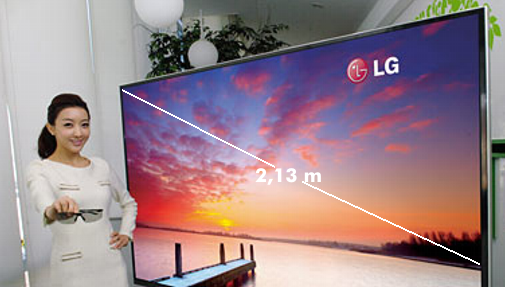flat panel display (FPD)
Classic screens work with cathode ray tubes(CRT). This technology is based on the fact that an electron beam is deflected over the entire screen and excites phosphors to emit light. The system required to deflect the electron beam requires a certain length, which is reflected in the screen depth.
It is quite different with flat panel displays (FPD), where the transistors that can be driven in individual pixels are directly switched across a matrix. All flat-panel display technologies, such as the TFT display, LCD display, LED display, SED display, OLED display, QLED display, micro-LED display, FED display, LCoS or plasma display, work on this basis and are characterized by their shallow depth compared to CRT monitors; hence the term flat-panel display.
Formats and interfaces
Flat-panel displays are available for digital TV playback, video, computer displays and commercial use. Display sizes and their resolutions have evolved rapidly from the small format for laptops, to common sizes for high-definition television( HDTV), to large screens of 80 or 90 inches, and even well over 100 inches diagonal. In parallel with screen size, screen resolutions have also increased, from HDTV at 1,280 x 720pixels, to the 2K standard and 4K standard at 4,096 x 2,160 pixels, to Ultra HDTV and the 8K standard. The required data rates for the FPD link are 1.7 Gbit/s and 9.4 Gbit/s and work with the LVC logic, Low Voltage CMOS (LVC). Distances of 1 m can be bridged with the FPD link.
The display interfaces used up to now had to be adapted to the higher transfer rates. For the DVI interface, HDMI, the DisplayPort( DP), Mobile High-Definition Link( MHL), Unified Display Interface( UDI) and Thunderbolt, there are corresponding versions that can handle the enormous amounts of data that have to be transferred between the computer or Blu-Ray player and the display.
ISO standardization
The ISO has standardized flat panel displays in the 13406-2 standard. This standardization creates uniform standards and thus offers comparability of products. The standardized quality characteristics include viewing direction properties, switching times of the pixels and the maximum number of defective pixels. Since the standard adopted in 2001 no longer did justice to the rapid development of flat panel displays, the International Standards Organization (ISO) revised some evaluation criteria with the ISO 9241 standard and included the older 9241-1 standard for CRT displays in this standard.

